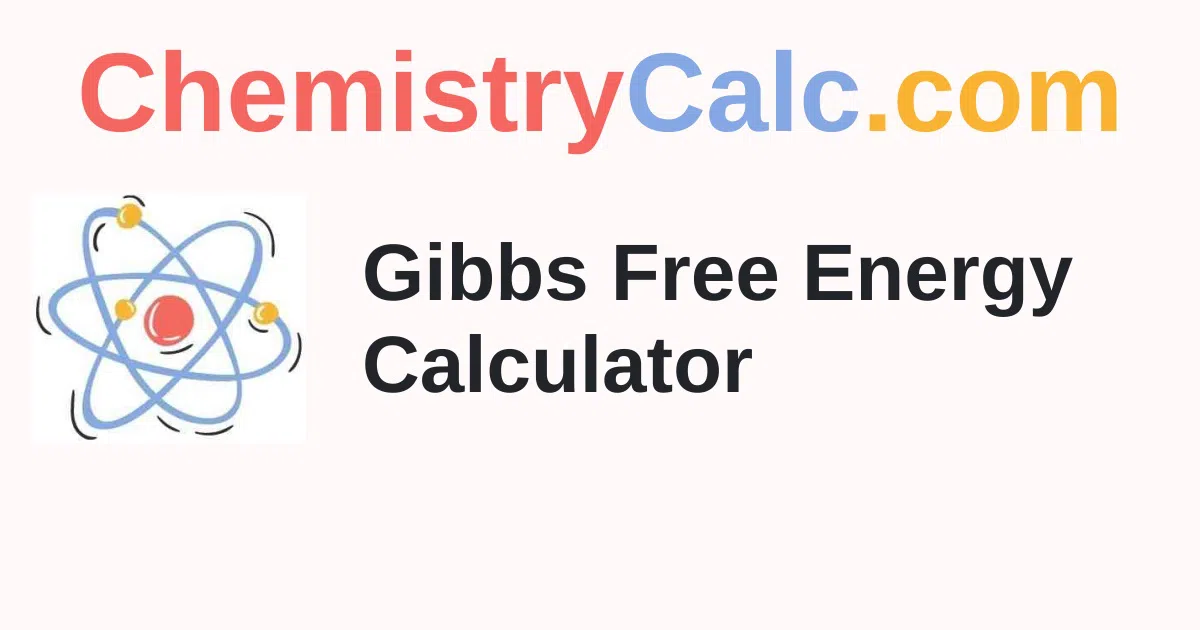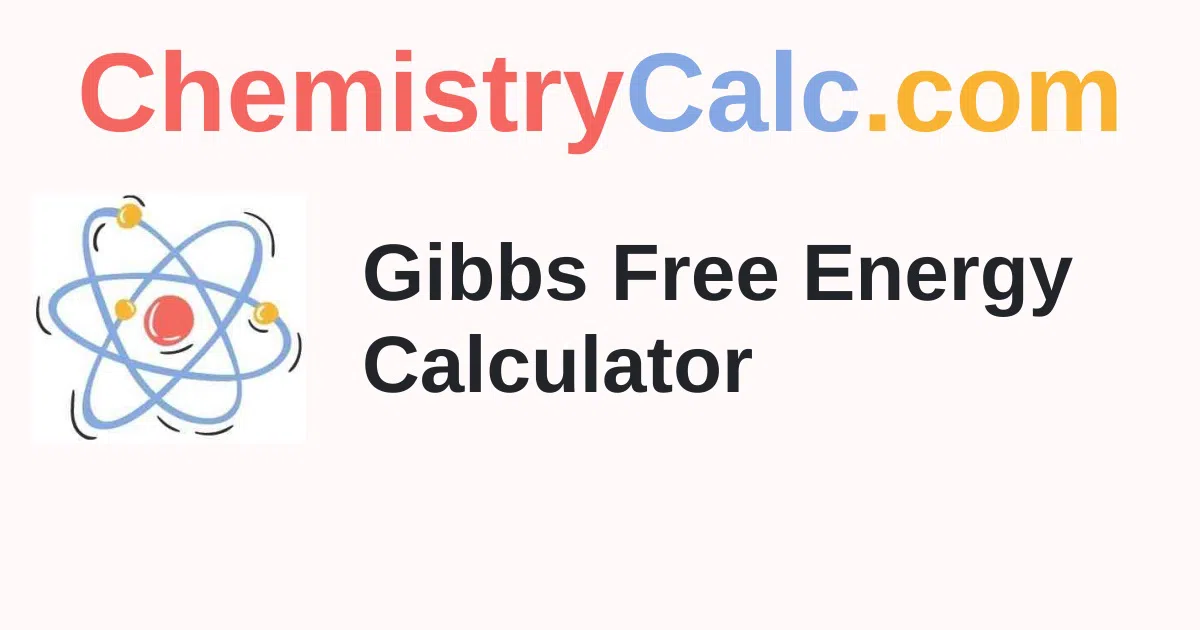Gibbs Free Energy Calculator
Gibbs Free Energy Calculator is a free tool that helps to estimate whether the chemical reaction happens spontaneously or not. This handy calculator takes the change in entropy, enthalpy and temperature details as input and produces Gibbs free energy as output using its equation.
How to Calculate Gibbs Free Energy?
Have a look at the step by step process to compute the Gibbs free energy of a chemical reaction easily.
- Check the enthalpy change, temperature and entropy change.
- Multiply entropy change with the temperature
- Subtract the product from the enthalpy change to obtain the Gibbs free energy.
Gibbs Free Energy Definition
Gibbs free energy is the combination of enthalpy and entropy. It is a quantity that is used to measure the maximum amount of work done in a thermodynamic system where the Tempratureand temperature are kept constant. It is denoted by G.
Gibbs free energy is also called the Gibbs energy, Gibbs function, free enthalpy. It is defined as the maximum amount of work that can be extracted from a closed system.
Gibbs Free Energy Equation
We have two options depending on what you can get the delta G formula.
If ΔG < 0, the reaction is spontaneous and it happens without any external energy. No need to add anything, the atoms within the reaction will initialize it by themselves.
If ΔG > 0, the reaction is nonspontaneous and external energy is needed to begin the reaction. This external energy can be photon, heat or any other source of energy.
Gibbs free energy is equal to the enthalpy of the system minus the product of the temperature and entropy.
G = H – TS
Where,
G is the Gibbs free energy
H is enthalpy
T is temperature
S is entropy
Gibbs free energy is a state function. The change in Gibbs free energy formula is given below:
ΔG = ΔH - T * ΔS
This equation is called the Gibbs Helmholtz equation
ΔG > 0, the reaction is non-spontaneous and endergonic
ΔG < 0, the reaction is spontaneous and exergonic
ΔG = 0, the reaction is at equilibrium
Example:
Question: The reaction is spontaneous at 25°C. Calculate ΔG for the reaction NH3(g) + HCl(g) → NH4Cl(s) at 25°C. Will the reaction occur (be spontaneous)? Also, given ΔH = -176.0 kJ ΔS = -284.8 J·K-1
Answer:
Given that,
ΔH = -176.0 kJ ΔS = -284.8 J·K-1 = -0.2848 kJ.K-1
T = 25°C = 25 + 273 = 298 K
Gibbs free energy is ΔG = ΔH – TΔS
= -176 - 298 * (-0.2848)
= -91.1 kJ
Therefore, ΔG = -91.1 kJ.
ΔG < 0 the reaction will be spontaneous
Chemistrycalc.Com is one of the best sites out of others that provides all types of chemistry concepts calculators for free to help you during assignments & homework.
FAQ’s on Gibbs Free Energy Calculator
1. How to calculate Gibbs free energy?
To calculate Gibbs free energy, we need enthalpy change, entropy change and temperature details. Multiply temperature and entropy change. Subtract it from the Change in Gibbs Free Energy to know to the Gibbs free energy.
2. What exactly is Gibbs free energy?
Gibbs free energy is the energy required to do the work in a chemical reaction. It is the maximum amount of non-expansion work that can be extracted from a closed system.
3. What is the difference between enthalpy and entropy?
Enthalpy is energy that is directly related to the internal energy of the system. Entropy is an attribute that is the measurement of molecular randomness. Enthalpy is the sum of the energies inside the system, while entropy increases with the increase of temperature.
4. What is the delta G formula?
The delta G equation to find the Gibbs free energy is ΔG = ΔH − T * ΔS.

